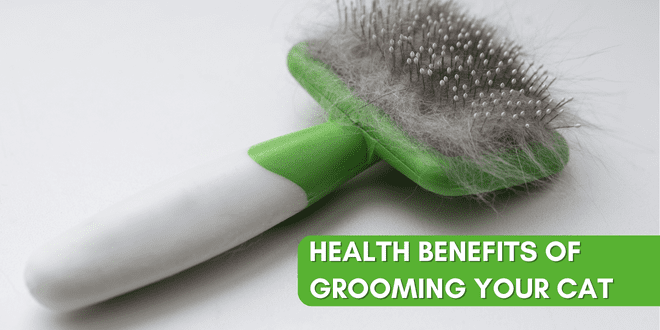
If you have a longhaired cat you’re probably very familiar with the need for daily grooming. The coats of longhaired cats easily tangle and mat, so regular grooming is a must. Unfortunately though, I’ve seen many longhaired cats who don’t get the needed daily grooming and end up with health complications as a result.
Even if you have a shorthaired cat, regular grooming is an important part of maintaining health. The cat may not have a coat that mats but frequent brushing will cut down on shedding and the amount of hair getting ingested through self-grooming.
Benefits of Grooming
- Brushing distributes the natural oil which helps maintain skin and coat health
- With frequent brushing you can address tangles before they turn into mats
- Grooming enables you to check for parasites such as fleas and ticks
- Time spent brushing your cat can help deepen the bond between the two of you
- Frequent grooming helps desensitize the cat to being handled
- You’re able to check for any skin abnormalities or ear problems
- The more hair you brush, the less hair your cat will swallow
Grooming Neglect
- Tangles and mats can pull on the delicate skin and make it difficult for the cat to walk
- Mats around the armpits could result in tearing of the skin.
- Dense mats block air flow to the skin and can cause skin irritation or wounds
- Fleas can hide in the mats, making it difficult for you to find and remove them
- Mats on the cat’s backside can become encrusted with feces and/or dried urine
- A cat may chew or tear at a mat due to pain and end up ripping the skin
Grooming Shouldn’t Take Long
If you brush your cat on a regular basis, the daily maintenance shouldn’t take long. Grooming shouldn’t be torture sessions lasting 30 minutes. With a longhaired cat, brush just a few minutes every day to keep the coat in good condition. For shorthaired cats, brushing a couple times a week should be enough, based on your particular cat’s coat condition and any other unique factors.
The Right Tools for the Job
Use brushes and combs that are comfortable and appropriate for your cat’s type of coat and pay attention to how much pressure you’re applying when you brush. Remember, a cat’s skin is sensitive and very thin. There are many types of brushes and combs available. If you’re unsure, ask your veterinarian for guidance. If your cat isn’t used to being brushed and isn’t reacting well to it, start with a grooming glove and then work up to a gentle brush.
If you have a longhaired cat and are unable to brush regularly, set up an appointment with an experienced cat groomer. Contact your veterinarian for a referral or read reviews of groomers in your area because you’ll want a groomer who uses gentle, force-free techniques.
Need More Information?
For more information on cat behavior and training, refer to the books by Pam Johnson-Bennett. Pam’s books are available at bookstores and online. We’ve included links to Amazon here on our website.
If you have a question regarding your cat’s health, please contact your veterinarian. This article is not intended as a replacement for your cat’s veterinary care.



